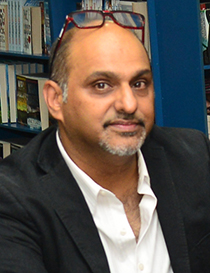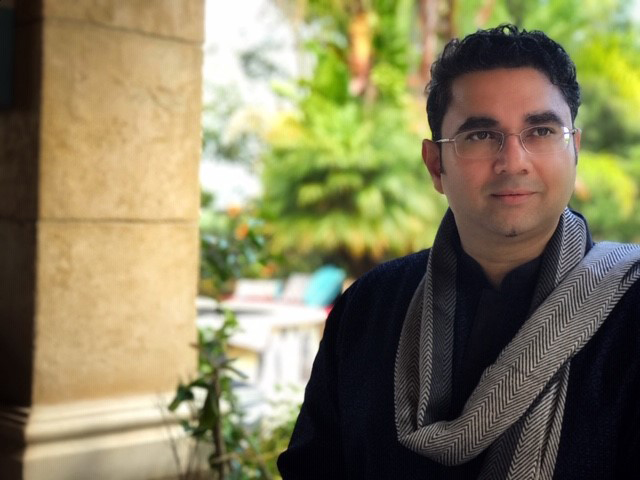Publicité
Music: In conversation with Sandeep Ranade
Par
Partager cet article
Music: In conversation with Sandeep Ranade

Sandeep Ranade is a Hindustani classical vocalist, composer and educator. He performs and teaches all over the world. He has been learning music from the age of four and is currently being mentored by Padma Vibhushan Sangeet Martand, Pandit Jasraj. His extensive research in combining systematic forms of practice, vocal anatomy, combinatorial aesthetics, neuroscience and resilient software has given rise to a new optimized form of riyaaz called ‘Naadyoga’ which compresses 10+ hours of musical learning practice into one hour.
Sandeep is also a software engineer who has worked in the United States at companies including Google, Microsoft, Citrix, Vmware and Cirtas (startup). He holds a Masters Degree in Computer Science from Johns Hopkins University. Sandeep works on technologies like data storage and compression, operating and distributed systems, mobile applications and dabbles in logo, web, graphic and UX design. He has developed the Naad- Sadhana iOS app to help Hindustani Classical singers achieve perfect notes.
Who is Sandeep Ranade?
I think the simplest two words that would summarize me quite a bit are ‘Geek Gayak’. I am a technologist, a musician. Beyond all that, I call myself an endless evolutionist. My aim is to be better, slightly better, in no matter what dimension, today than yesterday. That pretty much sums up my philosophy of life, where there is this common thread that sums up all my progress and philosophy of life, and that is, endless evolution.
Sandeep, although I have poor knowledge of Indian classical gharana traditions, I know they are deeply steeped in filial family tradition. One`s father, one`s grandfather must have some connections with the tradition for the son to be involved. Was your family steeped into the tradition, if not, how did you become who you are, a man enamored with this music?
There was a point in time since an early age, around 4 years old, when my grandmother realized early on, that I would stop crying if I did listen to music. At first the interest was purely as a hobby. I loved to sing and perform and so learnt music for a long time. The critical point came when my parents gifted me a cassette set after my 10th grade exams, specifically on my birthday. This cassette set was to be life changing. Pandit Kumar Ghandharva (Raag Malkauns Baithak), Ustad Amir Khan (Malkauns), Pandit Jasraj ji (Live from Samay Ghandarva festival 1992/93, Bhairav, Bhairav Bahar and Lalit). I was just completely taken aback by the beauty of this selection of music and it completely took me over. The attachment to it overwhelmed my mind. As things would thereafter unfold, I had entered my name in a local classical music competition some months back, and it was to happen in two days. I had loved the compositions in the cassette so much that I learnt and plan to sing them at the forthcoming competition.
As luck would have it, one of the presiding judge at the competition was late Srimati Dr Shobha Abhyankar who herself was Pandit Jasrajji`s student, for a long time. There were seven students only at the competition, so the judges had a lot of time to critique the participants. Dr Abhyanakar’s analysis of my singing was of such high standard that I was thoroughly impressed. She said I had a beautiful and creative voice, but lacked riyaaz and that I was not paying attention to the words. The song I sang was a malkauns, ‘pag la ga na de’ which whilst singing became, ‘pagla ga na de’, which completely changed the meaning. I do not know what went over me but after the competition, I approached her and asked her to teach me. I did not even know who she was or from which Gharana, or not even that she had been a long time student of Pandit Jasraj ji and belonged to the same Gharana. She said yes, I will teach you. This introduced me to Pandit Jasraj`s world and music. The rest is history.

Yesterday you were introduced as part of the Mewati Gharana, can you explain this filial chain and belonging to the Mauritian public?
In the past Panditji heard me sing in competitions that he had presided as a judge. I recall having sung one of his own compositions, not knowing it was actually his. He did have some kind words for me. However, from 2009 onwards, I started learning directly from him. From then on, I have been his student. In fact, I have been in the Mewati Gharana earlier than 2009, at the tender age of 17 or so.
Sandeepji, one of the intriguing things about you especially after attending both one of your baithak and concert, is the beautiful mix between science and art. You are a computer scientist from John Hopkins University, and one can see the scientific design orientation in you, but you are also very artistic and expressive in your art. How do you marry these two areas in this profession?
I think it is a spectrum, and in any field one selects, there is a spectrum in having an art and science side to it. In any field if you go deep enough in the science and art side they will converge and meet. There are some commonalities and it has been very complementary for me. I tend to get bored easily. It allows me to give myself a break and do one or the other, and then come back to the first. This keeps me interested and sane at the same time. There are so many interesting and complementary aspects in computer science and discrete mathematics that appeal to me. Both fields have helped me get better in the other, as well as of course a slew of other areas. I was able to optimize my riyaaz from 10 hrs to 1 hr, without loss of quality, because this is the same technique one will use to optimize an algorithm, or a program. However, there is the brain involved, biofeed back and neurology also needs to be understood to expand one`s understanding. In brief, one cannot separate one from the other, science and art are symbiotic and complementary, different sides of a continuum.
Sandeepji, we have had great visitors from great Gharanas to Mauritius in the past. In yesterday`s concert, you introduced the naads- hadana app that you have developed. You sang a bandish and seem to congratulate the app’s tabla, can you please explain this novelty to the public?
Many of the tabla phrases that the app plays were meticulously coded in from expert content, but the app also uses AI to improvise and create brand new phrases. These can often pleasantly surprise me. I’ll spontaneously appreciate the app’s creativity as if it’s one of my students creating a brand new and beautiful phrase!
Is this app the new way of teaching classical music, as clearly, the tradition of Guru Parampara system is slowly dying in India, mainly for economic reasons, as no one really has time to spend part of their lives at the Guru’s?
This app closes the feedback loop, which, back in the day, the Gurukul system did so well. In today’s fast-paced world, the Gurukul system is sadly fading out and it is my sincere attempt to keep the core principles of Gurukul alive in the 21st century using technology and other fields like computer science, discrete math, optimization theory, learning theory, neurology, etc.
Sandeepji how do you see the world of Indian classical music globally today? Where is it progressing towards?
Music today has an amazing opportunity to take the leap to the next stage of evolution. The world is connected like never before, knowledge flows at our fingertips and we can learn from gurus all across the world and through an immense collection of videos. That said, there are some core Gurukul practices that are dying out slowly – regular riyaaz, spending time with the guru for many hours a day and many years, really imbibing music at a deep level, not just at the mechanical / technical level, etc. If we can keep our dedication, regular practice and continued improvement alive, our musical progress will accelerate.
Ending word, so what are the next steps for Sandeep Ranade? Do you have a busy global concert schedule, and teaching schedule? Are you open to coming to Mauritius?
For me, the next steps are to make sure that the App reaches as many students and practitioners of music as possible. I want to also continue to improve the app endlessly, as there really is an infinity of work out there for me to do. I would love to come to Mauritius – just let me know when…
Publicité
Publicité
Les plus récents






